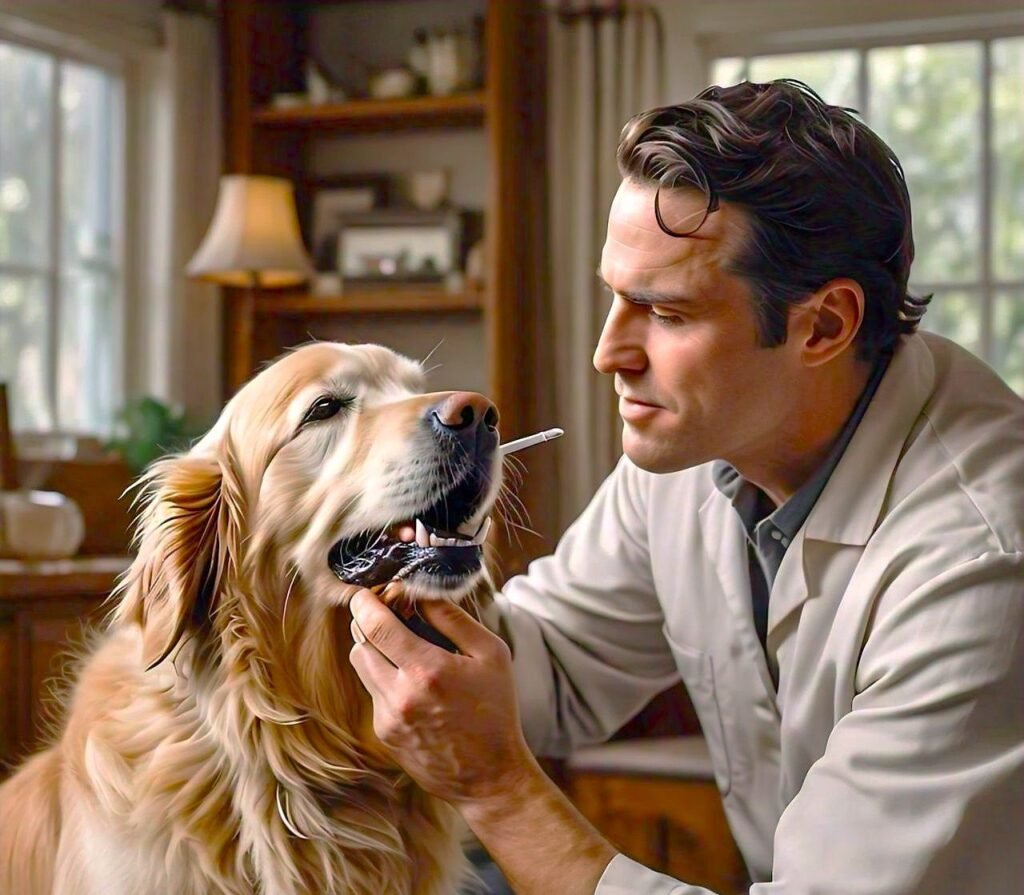5 Common Dental Issues in Dogs
Dental issues in dogs can range from gingivitis to shattered teeth. Dental problems should be diagnosed and treated immediately to avoid discomfort, infection, and tooth loss.
Our pets do not always express their pain but might exhibit symptoms such as refusing to chew, preferring softer meals, spilling food, or pawing at their lips. Research shows that severe periodontal disease increases the risk of kidney failure and systemic inflammation. It is critical to consult with your veterinarian to verify that your dog’s mouth is healthy.
In this post, we’ll look at common dental issues in dogs, how to identify them, and what you must do to safeguard your furry friend’s teeth in good health.
Why is Dental Health Important?

You may wonder, “Why should I bother about my dog’s teeth?” Like humans, Dogs’ dental health is linked to their general health. Bad dental hygiene can lead to catastrophic illnesses such as cardiac disease, liver difficulties, and kidney failure. Research has found that dental issues in dogs are more prone to develop these life-threatening illnesses. So, caring for your dog’s teeth is more than simply keeping their breath fresh; it’s also about protecting their health.
Common Signs of Dental Problems
How can you know dental issues in dogs? Some signs are more noticeable than others, but here are a few crucial symptoms:
- Bad breath (not just ‘doggy breath’)
- Yellow or brown teeth: plaque and tartar buildup
- Red, puffy, or bleeding gums.
- Difficulty eating or sudden decrease in appetite
- Excessive drooling
- Petting their face or pawing at their mouth
- Teeth that are loose or missing
You should examine your dog’s spoken condition if you detect any of these signs.
5 Common Dental Issues in Dogs
1. Periodontal Disease
The most ubiquitous dental issue in dogs is periodontal disease, which impacts around eighty percent of dogs over three. Plaque buildup leads to an illness of the tissues around the teeth. Untreated may result in tooth loss, bone injury, and painful inflammation. Gingivitis (gum inflammation) is the first stage of the disease, and it escalates to periodontitis, which can cause lasting damage.
2. Tooth Decay
Dogs, like humans, can have cavities. When oral bacteria break down food particles, acids are produced that erode tooth enamel and cause tooth decay. This can eventually result in painful cavities that must be treated. While it is less frequent in dogs than in humans, some breeds with crowded teeth or poor dental care are more susceptible.
3. Broken or Fractured Teeth
Dogs enjoy chewing, but their behaviors occasionally result in broken or cracked teeth. This can occur when your dog chews on something challenging, such as a bone or toy. A fractured tooth is painful and can also cause infections if the pulp (the inner part of the tooth) becomes exposed. Your veterinarian may recommend extraction or a root canal
4. Oral Infections depending on the severity.
Untreated dental conditions, such as broken teeth, gum disease, or foreign items lodged in the mouth, can cause oral infections in dogs. These infections can be excruciating and result in abscesses (pockets of pus) that necessitate surgical intervention. If your dog produces excessive saliva, has swelling in its mouth or face, or refuses to eat, it might suffer from an oral infection requiring quick attention.
5. Bad Breath
While some doggy breath is natural, foul-smelling breath can indicate an underlying tooth problem. Bad breath, or halitosis, is frequently caused by bacteria within the mouth, but it can also indicate more severe conditions such as kidney disease or diabetes. See a veterinarian if your dog’s breath is offensive worse than usual.
Preventing Dental Problems
Prevention is always preferable to cure dental issues in dogs, which applies to your dog’s oral health. Most common dental problems in dogs mentioned above can be avoided with regular dental care.
Here are some suggestions for keeping your dog’s teeth and gums healthy:
- Brush their teeth every day using dog toothpaste.
- Give them toys or dental chews to help clean their teeth as they chew.
- Feed a well-balanced diet to enhance oral health.
- Regular visits to the vet to get professional cleanings and find problems early.
Dental Care at Home
Taking care of your dog’s teeth doesn’t need to wait for an appointment at the vet. Regular brushing at home is one of the most effective ways to avoid dental problems. Using toothpaste and a toothbrush made for dogs, begin carefully and increase the frequency and time. If your dog refuses, try rewarding it with treats or praise.
When to Visit a Veterinarian?
Not all dental disorders can be resolved at home. If your dog shows any of the above signs or is uncomfortable, it’s time to visit a veterinarian. They can complete an evaluation, clean your dog’s teeth, and provide medication as needed. Early intervention is critical to avoiding more significant health problems in the future.
Final Thoughts
Your dog’s dental health is critical to its general well-being. Understanding and proactively preventing the most common dental issues in dogs can help your furry buddy enjoy a long, healthy, and happy life. Remember, a little effort goes a long way toward keeping those dazzling whites in top condition.
FAQs
1. How frequently should you brush your dog’s teeth?
Brushing your dog’s teeth daily is ideal, but even 2-3 times per week can make a big difference.
2. Can I brush my dog’s teeth with human toothpaste?
No, human toothpaste contains chemicals that are potentially dangerous to dogs. Always use toothpaste made specifically for dogs.
3. What exactly are the signs of periodontal disease in dogs?
Common symptoms include poor breath, red or swollen gums, and difficulty swallowing.
4. Are there breeds that have more problems with their teeth?
Smaller breeds, such as Yorkshire Terriers and Chihuahuas, are more prone to dental problems because of their smaller mouths and packed teeth.
5. How do I keep my dog from breaking their teeth?
Avoid giving your dog rigid materials to chew on, such as bones or antlers, and monitor their chewing behavior.


Pingback: How to Clean Dog Teeth | PetsCarePedia